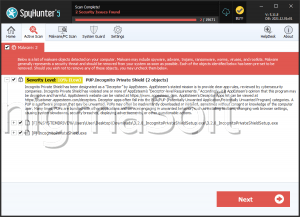Windows Private Shield
Threat Scorecard
EnigmaSoft Threat Scorecard
EnigmaSoft Threat Scorecards are assessment reports for different malware threats which have been collected and analyzed by our research team. EnigmaSoft Threat Scorecards evaluate and rank threats using several metrics including real-world and potential risk factors, trends, frequency, prevalence, and persistence. EnigmaSoft Threat Scorecards are updated regularly based on our research data and metrics and are useful for a wide range of computer users, from end users seeking solutions to remove malware from their systems to security experts analyzing threats.
EnigmaSoft Threat Scorecards display a variety of useful information, including:
Ranking: The ranking of a particular threat in EnigmaSoft’s Threat Database.
Severity Level: The determined severity level of an object, represented numerically, based on our risk modeling process and research, as explained in our Threat Assessment Criteria.
Infected Computers: The number of confirmed and suspected cases of a particular threat detected on infected computers as reported by SpyHunter.
See also Threat Assessment Criteria.
| Ranking: | 2,529 |
| Threat Level: | 20 % (Normal) |
| Infected Computers: | 16,286 |
| First Seen: | May 20, 2012 |
| Last Seen: | September 19, 2023 |
| OS(es) Affected: | Windows |
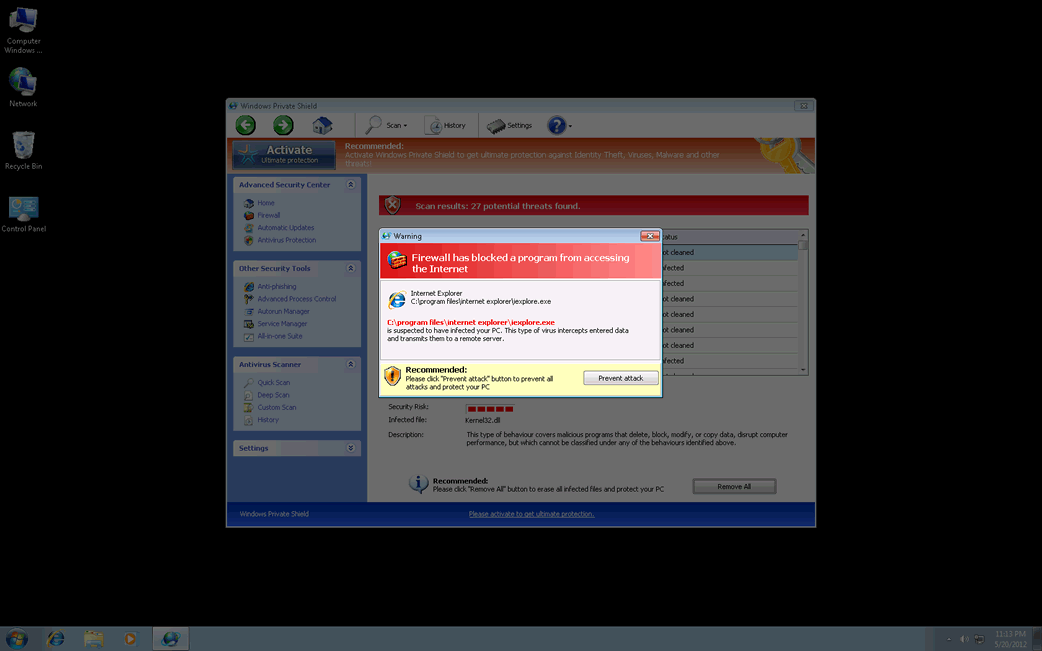
Windows Private Shield Image
The main reason to avoid Windows Private Shield is because, despite its appearance, Windows Private Shield is not a real security program. ESG malware analysts have detected that Windows Private Shield is one of the many known clones of the FakeVimes family. This is quite a large family of fake security programs that have been extensive since 2009. Malware infections like Windows Private Shield are usually referred to as rogue anti-spyware programs or rogue security software. These fake anti-spyware applications are part of a popular online scam that seeks to steal your money.
Table of Contents
Windows Private Shield and the Many Fake Anti-Malware Applications in the FakeVimes Family
Due to the fact that the FakeVimes family of malware has existed so long, most legitimate security programs can deal easily with Windows Private Shield and its clones. However, malware in the FakeVimes family may contain a dangerous rootkit component. This rootkit component, detected as a variant of the Sirefef or ZeroAccess rootkit, can make it difficult for most security programs to find and remove the Windows Private Shield infection. This has given malware in the FakeVimes family a new opportunity to attack computer systems and bypass already established security protocols in order to deal with these fake security programs. There are many clones of Windows Private Shield that include this rootkit component, including such fake security programs as Virus Melt, Presto TuneUp, Fast Antivirus 2009, Extra Antivirus, Windows Security Suite, Smart Virus Eliminator, Packed.Generic.245, Volcano Security Suite, Windows Enterprise Suite, Enterprise Suite, Additional Guard, PC Live Guard, Live PC Care, Live Enterprise Suite, Security Antivirus, My Security Wall, CleanUp Antivirus, Smart Security, Windows Protection Suite, Windows Work Catalyst.
The main purpose of the Windows Private Shield scam is preying on inexperienced computer users, convincing them that their computer is severely infected so that they will install a "full version" of Windows Private Shield. Of course, this supposed full version is not free. There are many ways in which Windows Private Shield tries to convince its victims that their computer system is infected. Some of these include making the victim's computer unstable, causing browser redirects and displaying a constant stream of alarming security notifications. Since Windows Private Shield has no real anti-malware capabilities, ESG security analysts strongly advise against purchasing this fake security program. Instead, Windows Private Shield should be eliminated with a reliable anti-malware application capable of dealing with Windows Private Shield's associated rootkit component.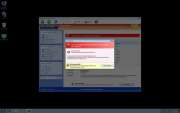
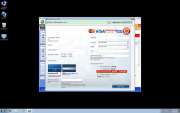
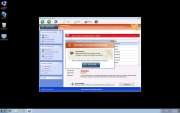
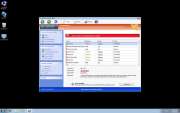
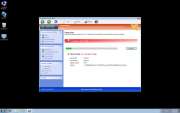
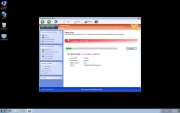
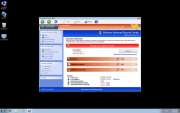
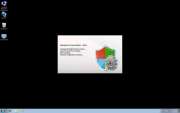
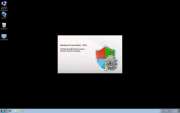
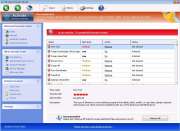
Windows Private Shield Video
Tip: Turn your sound ON and watch the video in Full Screen mode.

File System Details
| # | File Name |
Detections
Detections: The number of confirmed and suspected cases of a particular threat detected on
infected computers as reported by SpyHunter.
|
|---|---|---|
| 1. | Protector-[RANDOM NUMBERS].exe |
Registry Details
URLs
Windows Private Shield may call the following URLs:
| premium-shops-around.me |
